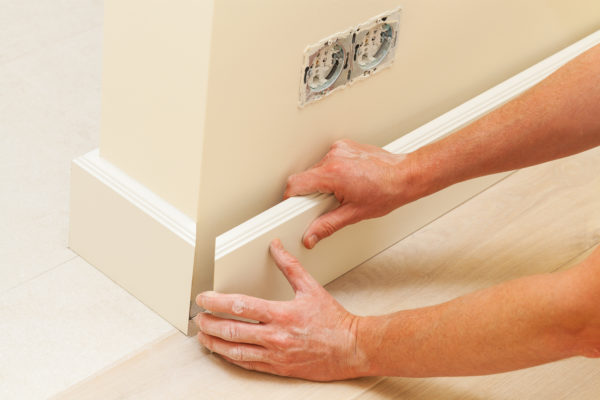The humble skirting board has been a point of discussion for generations, with the many pros and cons often depending on the type of house you live in. If your current house has no skirting boards, it may be that some of the benefits are not applicable, but alternatively, there are a number of problems that the addition of a skirting board can solve.
In many respects, it is easy to take skirting boards for granted and live under the impression that any house HAS to have them, without really considering what their benefits are. Let’s face it, for 99% of the time skirting boards sit there minding their own business, and we would certainly notice if they suddenly disappeared. But looking at it the other way around, what do they offer if we don’t have them? And do they represent a practical and cost-effective home improvement? Well, let’s have a look.

What are the benefits of skirting boards?
Historically, skirting boards were installed to hide the gap at the bottom of a wall and floor junction left when a wall had been wet plastered and you couldn’t get a neat finish at the bottom. Architrave was used around doors and windows for the same reason. Today we use nice and neat, machine-cut sheets of plasterboard, but skirting boards are often still installed.
Skirting boards are also used to hide blemishes in plastered walls and where poor building techniques have left uneven finishes. If your home doesn’t have skirting boards then it is reasonable to assume you don’t have this problem, but if you do, then skirting boards are a neat and simple solution.
From a practical point of view, skirting boards protect the walls from vacuum cleaners, pushchairs, furniture, kids generally and pets. This can be vital in terms of the integrity of plastered walls and while you might think it is easier to avoid hitting the walls in the first place, you will be amazed how many scuff marks appear on your skirting boards when you have them fitted. Also, skirting boards act as a barrier to moisture ingress from the walls and protect from dust building up and miscellaneous small items getting lost, they also allow for occasional expansion and contraction of the plasterboard with temperature and humidity changes in a room.
What should I consider when fitting skirting boards?
It is true that many people prefer skirting boards simply for their period detail and for the fact that they ‘frame’ a room nicely. It is common to paint skirting a different colour to the walls to provide a contrast, which is a very contemporary design technique. With this in mind, you should always ensure that you paint skirting to suit the room, and also you should match skirting to the style of the room.
Skirting can match a period, such as Edwardian skirting, Georgian skirting, Victorian skirting or even contemporary skirting. In an old house skirting is usually larger and more intricate in design and is therefore more of an important and prominent feature. Skirting doesn’t have to be old-fashioned though, there are many modern styles that will suit carpet or polished wooden flooring.
You can also use skirting to hide wires and cables from TVs, computers, gaming and audio equipment, so the positioning of these and when and how you install your skirting is another factor to consider. Essentially, skirting usually needs painting and can be a challenge to fix and remove, but overall we believe skirting is an asset to a house that finishes off a room nicely and brings many benefits.
Click here to view our full range of skirting boards.

